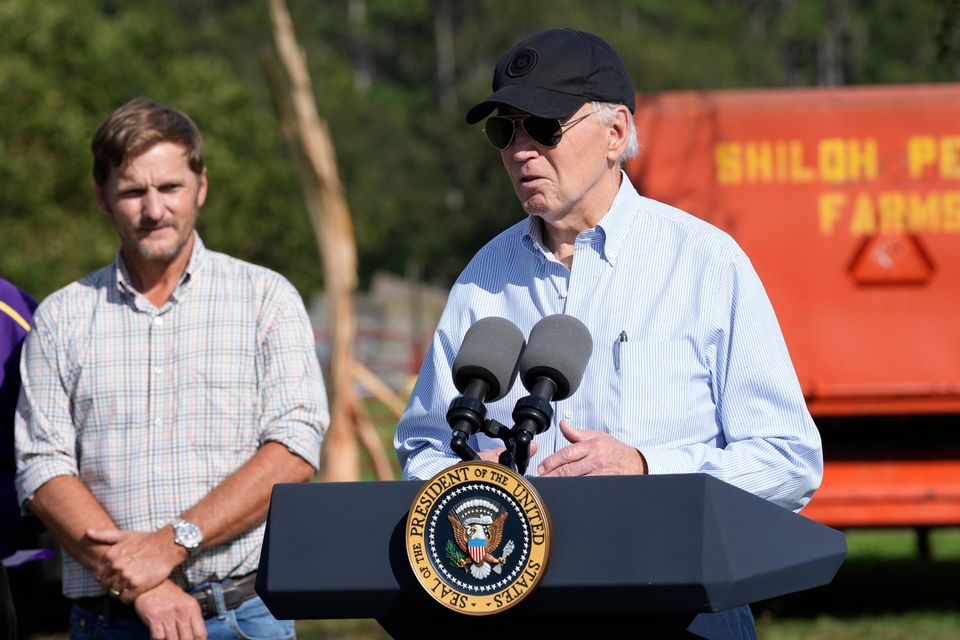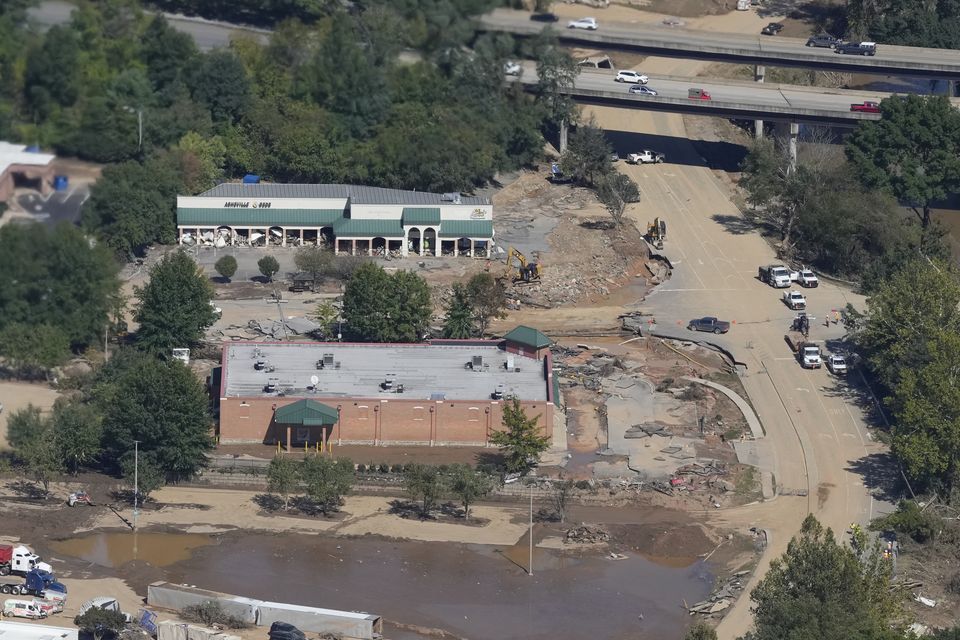The search for victims of Hurricane Helene has moved into its second week on Friday, as exhausted rescue crews and volunteers continued to work long days — navigating past washed out roads, downed power lines and mudslides — to reach the isolated and the missing.
“We know these are hard times, but please know we’re coming,” Sheriff Quentin Miller of Buncombe County, North Carolina, said at a Thursday evening press briefing.
“We’re coming to get you. We’re coming to pick up our people.”
With at least 215 killed, Helene is already the deadliest hurricane to hit the mainland US since Katrina in 2005, and dozens or possibly hundreds of people are still unaccounted for.
Roughly half the victims were in North Carolina, while dozens more were killed in South Carolina and Georgia.
President Joe Biden speaks at Shiloh Pecan Farm as property manager Buck Paulk looks on in Ray City, Georgia as part of Mr Biden’s trip to see areas impacted by Hurricane Helene (Susan Walsh/AP)
In Buncombe County alone, 72 people had been confirmed dead as of Thursday evening, Mr Miller said. Buncombe includes the tourist hub of Asheville, the region’s most populous city. Still, the sheriff holds out hope that many of the missing are alive.
His message to them?
“Your safety and well-being are our highest priority. And we will not rest until you are secure and that you are being cared for.”
Now more than a week since the storm roared onto Florida’s Gulf Coast, lack of phone service and electricity continues to hinder efforts to contact the missing.
That means search crews must trudge through the mountains to learn whether residents are safe.
Along the Cane River in western North Carolina’s Blue Ridge Mountains, the Pensacola Volunteer Fire Department had to cut their way through trees at the top of a valley on Thursday, nearly a week after a wall of water swept through.
Pensacola, which sits a few miles from Mount Mitchell, the highest point east of the Mississippi River, lost an untold number of people, said Mark Harrison, chief medical officer for the department.
“We’re starting to do recovery,” he said. “We’ve got the most critical people out.”
Near the Tennessee state line, crews were finally starting to reach side roads after clearing the main roads, but that brought a new set of challenges.
The smaller roads wind through switchbacks and cross small bridges that can be tricky to navigate even in the best weather.
“Everything is fine and then they come around a bend and the road is gone and it’s one big gully or the bridge is gone,” said Charlie Wallin, a Watauga County commissioner.
A view of damage in Asheville, North Carolina (Susan Walsh/AP)
“We can only get so far.”
Every day there are new requests to check on someone who has not been heard from yet, Mr Wallin said. When the search will end is hard to tell.
“You hope you’re getting closer, but it’s still hard to know,” he said.
Electricity is being slowly restored, and the number of homes and businesses without power dipped below 1 million on Thursday for the first time since last weekend, according to poweroutage.us.
Most of the outages are in the Carolinas and Georgia, where Helene struck after coming into Florida on September 26 as a Category 4 hurricane.
President Joe Biden flew over the devastation in North and South Carolina on Wednesday.
The administration announced a federal commitment to foot the bill for debris removal and emergency protective measures for six months in North Carolina and three months in Georgia.
The money will address the impacts of landslides and flooding and cover costs of first responders, search and rescue teams, shelters and mass feeding.

